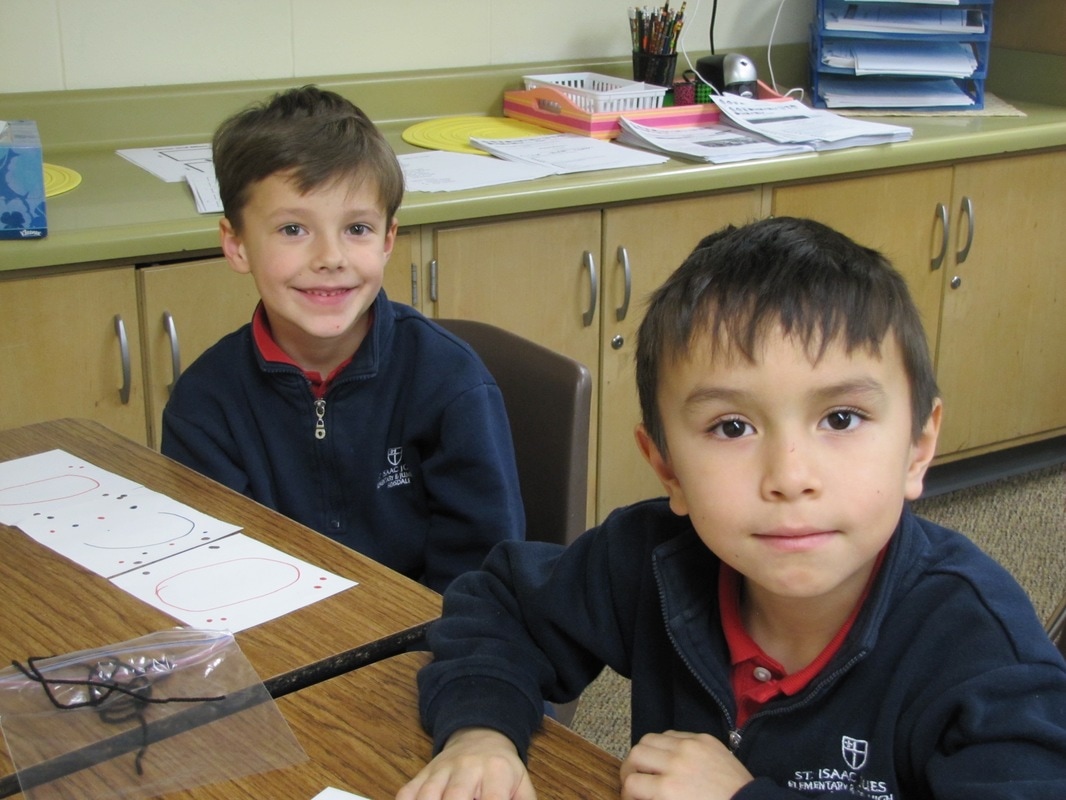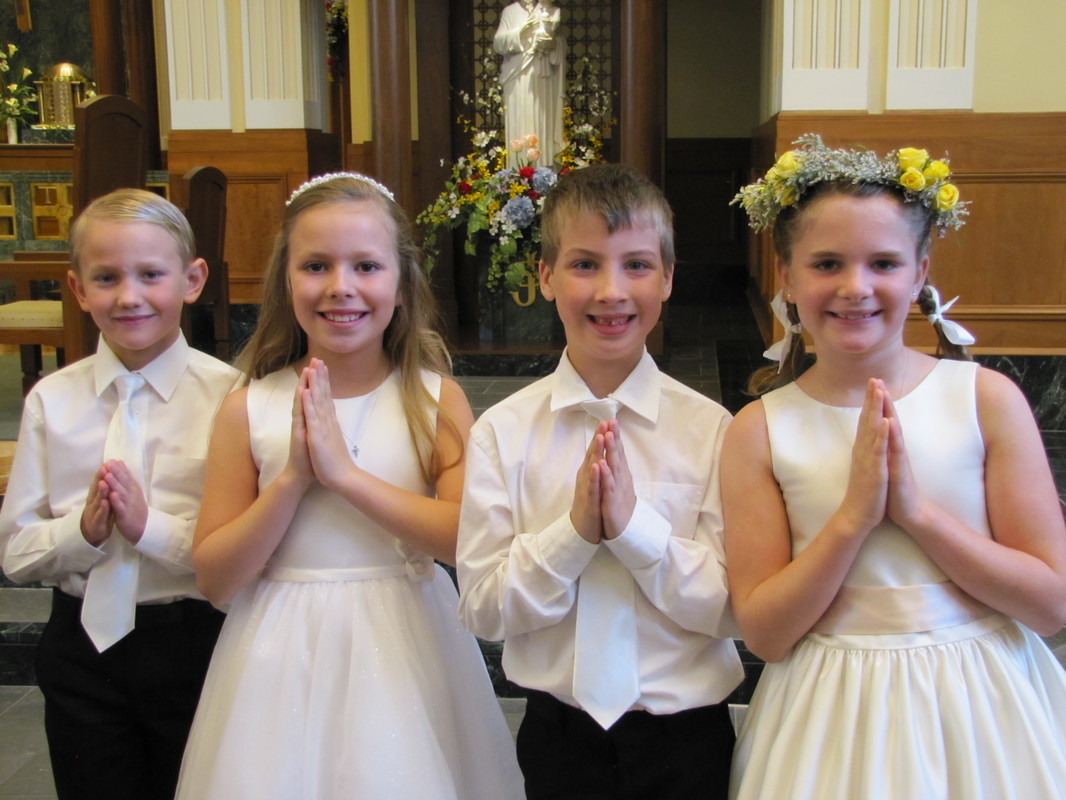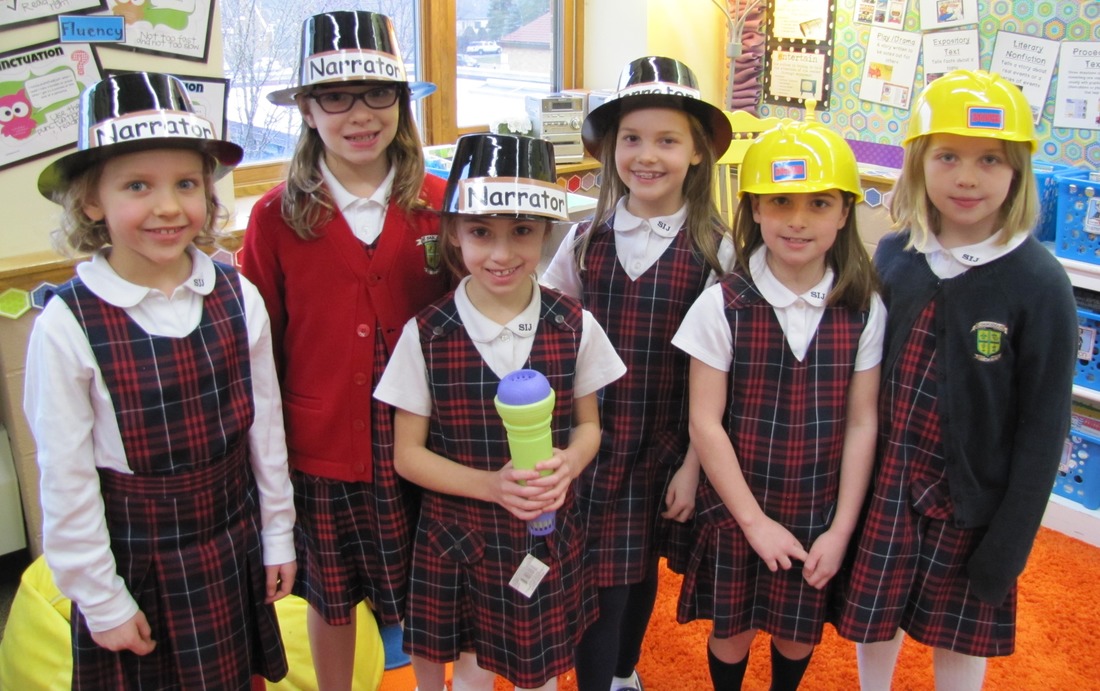2nd Grade Curriculum
Religion
Students will learn through stories, activities, Scripture, prayer, discussion, and reflection about the Catholic faith. Catholic values are discussed and integrated into all subject areas. Concepts include a study of:
- God’s laws of love (The Ten Commandments);
- preparation for the Sacrament of Reconciliation;
- preparation for the Sacrament of Holy Eucharist;
- how Jesus Christ is with us in the seven sacraments;
- how Catholics are called to serve God in different ways;
- parts of the Mass;
- seasons of the Liturgical year
- selected saints;
- Our Blessed Mother; and
- introduction to the rosary.
Language Arts
Students will use correct spelling and punctuation and communicate well in speech and written word. Concepts include a study of:
- phonics decoding;
- spelling instruction and practice;
- parts of speech;
- building vocabulary;
- continuation of Zaner Bloser handwriting practice; and
- basic mechanics of writing: complete sentences, capitalization, punctuation, paragraph writing and editing.
Reading
The goal of our reading program is to develop the student’s ability to read with fluency and to comprehend and interpret written text of various genres. Concepts include a study of:
- text comprehension strategies and skills: main idea, sequencing, context clues, inferencing, predicting and drawing conclusions.
Mathematics
Students will acquire a knowledge of mathematics and the ability to apply math skills to solve problems through the use of text, extended activities, and hands-on experiences. Concepts include the study of:
- number patterns;
- place value to 1,000;
- money;
- addition and subtraction of 1, 2 and 3 digit numbers, both with and without regrouping;
- problem solving;
- data analysis;
- time;
- customary and metric lengths; and
- geometric shapes and equal shares.
Social Studies
Students will develop an awareness and understanding of their world, primarily their own community and our country. Concepts include a study of:
- rules, rights and responsibilities of both government and citizens;
- history and time (past, present and future);
- explorers, Native Americans and pilgrims;
- consumers, goods and services;
- American scientists, artists and inventors; and
- maps and globes.
Science
Students will use critical thinking skills to observe, predict, question and explain the world around them. Concepts include a study of:
- life science: living things, plants, animals, the body and habitats;
- earth science: earth resources, weather, fossils, space and the sun;
- physical science: matter, energy, force and sound; and
- earth, space and technology.
Physical Education
Physical fitness and well being will continue to be encouraged by learning and exploring activities that affect a healthy lifestyle. Concepts include a study of:
- change of direction and speed;
- kicking, throwing, walking, marching, balancing, jumping, etc.; and
- team sports skills are introduced; and
- simple games and small group activities which challenge students and foster creativity.
- ball and agility games;
- manipulative skills (bean bags, kicking, throwing, trapping, rolling, etc.);
- movement (walking, marching, marking, hopping, etc.);
- parachute;
- long and short rope jumping;
- team sports; and
- and recreational games.
Art
Students will draw and paint using a variety of materials such as pencils, crayons, chalk, oil pastels, marker, tempera and watercolor. Concepts include:
- recognizing and defining elements of design, including line, shape, color, value and texture;
- being able to recognize and distinguish between 2-D and 3-D works of art, and building art exhibiting relief;
- exploring techniques in watercolor, markers and tempera;
- being introduced to feature artists Grandma Moses and Jim Dine, and book illustrator Beatrix Potter; and
- using iPads.
Music
Students will have the opportunity to participate in music activities and to develop an appreciation for music. Concepts include a study of:
- identifying the sound of a variety of instruments;
- recognizing and performing musical notation; and
- singing in groups.
Information Skills
Information skills include emphasis on the Caldecott Award-winning books. Illustrations are studied for their technique and impact on meaning. Students consider possible alternatives for plot resolution and use adjectives to describe various plot developments. Students read narrative non-fiction and discuss historical context. Students read Monarch books and discuss genre for various titles. Students will:
- predict outcome based on evidence presented in text and identify main idea;
- discuss similarities and connections to other books read;
- further consider differences between fiction and non-fiction;
- learn traits of non-fiction texts, including bibliography and author’s notes;
- participate in a poetry unit, with discussion of literary terms such as alliteration; and
- self-select books for checkout with consideration of reading across variety of genres.
Technology Skills
The use of technology is an integral part of the second grade curriculum. In order to maximize student learning, technology is incorporated into the classroom for the purpose of instruction and assessment. Students are provided opportunities within the curriculum to incorporate technology through the use of iPads with a variety of apps to enhance the following skills:
- reading fluency and comprehension;
- gathering data on the internet using teacher directed websites;
- completing research on the internet using “kid-safe” search engines;
- keyboard familiarity;
- graphic designing;
- art skills;
- technology vocabulary, etiquette and competency; and
- use of curriculum related software.
STEM
The Project Lead The Way Launch Interdisciplinary Curriculum is designed for Second grade students to apply STEM knowledge, creativity, skills, and habits of mind, and discover that trying different approaches and solutions is an essential part of the learning process. Engineering design in second grade introduces students to “problems” as situations that people want to change. They can use tools and materials to solve simple problems, use different representations to convey solutions, and compare different solutions to a problem and determine which one was best. Emphasis is on thinking through the needs or goals that need to be met, and which solutions best meet those needs and goals. Through scaffolded learning activities, second grade students apply newly acquired knowledge and skills as they work as part of a team and utilize the design process to define the problem, sketch, build using available materials, test, and reflect on their designs.
Elements and skills of our Project Lead The Way Launch curriculum for Second Grade include:
Elements and skills of our Project Lead The Way Launch curriculum for Second Grade include:
- The PLTW Second Grade Curriculum includes four modules that bring learning to life: Materials Science: Properties of Matter, Materials Science: Form and Function, The Changing Earth, Grids and Games;
- The PLTW Curriculum is aligned with the Next Generation Learning Goals and Standards for Second Grade;
- team collaboration/Leadership skills;
- inquiry- rich content that links reading, communication,and science in every activity;
- problem-based-, project-based, and inquiry-based learning and team collaborative decision-making;
- academic concepts are coupled with real world problems;
- student investigate and classify different kinds of materials by their properties, and apply their knowledge to solve a design problem;
- students investigate the different forces that shape the earth and design solutions to limit the impact of erosion;
- students explore combined mathematics and computers, and investigate numerical relationships while learning about sequence and structure required in computer programs;
- students learn how to think computationally about problem;
- organize and maintain an engineering notebook;
- reason abstractly, quantitatively, and logically;
- use appropriate tools strategically;
- learning is measured through PLTW rubrics and assessments which use performance-based formative assessments and summative, content based specific assessments;
- STEM lab; and
- PLTW online curriculum, iPads, and videography.
Resource and Speech/Language Pathology
St. Isaac Jogues School provides on site speech/language and resource services. Curriculum is child specific and designed to meet needs in reading, math and communication skills.





